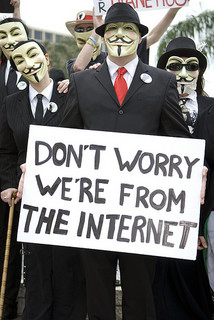One usually doesn’t have to go too far before finding blog posts decrying slacktivism, or the modern trend of low-effort internet activism. Whether these actions are sharing the Kony video, wearing a plastic bracelet, changing one’s social media profile image or texting to donate a small amount to charity, they are often decried as not being well thought out and just another way for privileged people to feel better about their status.
While I won’t deny that there have been some problems with some high-profile “slacktivist” campaigns – the Kony campaign is a good example – there is evidence that participating in these kinds of actions aren’t the end of most people’s activism, and they can have lasting benefit.
This week, I came across a great infographic on Mashable which displays statistics showing that slacktivist aren’t necessarily the slackers we may believe them to be. Another infographic from TakePart shows the magnitude of some recent social media activism campaigns.
Also published this week, is a great opinion piece on the Al Jazeera English website, The Subjectivity of Slacktivism. The piece examines modern internet activism, comparing and contrasting the Kony2012 and the Trevon Martin cases. It outlines the problems with easy internet activism, while pointing out some of the potential benefits.
It seems that, while there is definitely room for care and concern around these campaigns, they can also be powerful tools for social change. This is especially true for causes, like the Trevon Martin case, where bringing awareness and attention to an issue can be a very valuable step towards progress.
Has your nonprofit engaged in online awareness campaigns? Have you experienced backlash after a campaign? Do you generally critique or support these sorts of actions? Use the comments to answer these questions or ask more of your own.
